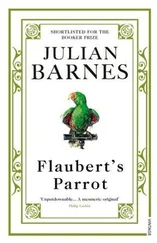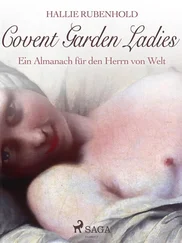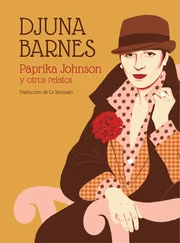Djuna Barnes
LADIES ALMANACK: showing their Signs and their tides; their Moons and their Changes; the Seasons as it is with them; their Eclipses and Equinoxes; as well as a full Record of diurnal and nocturnal Distempers Written & Illustrated by a Lady of Fashion
Despite the efforts of lesbian and feminist publishing houses and a few university presses, the bulk of the most important lesbian works has traditionally been available only from rare book dealers, in a few university libraries, or in gay and lesbian archives. This series intends, in the first place, to make representative examples of this neglected and insufficiently known literature available to a broader audience by reissuing selected classics and by putting into print for the first time lesbian novels, diaries, letters, and memoirs that have special interest and significance, but which have moldered in libraries and private collections for decades or even for centuries, known only to the few scholars who had the courage and financial wherewithal to track them down.
Their names have been known for a long time — Sappho, the Amazons of North Africa, the Beguines, Aphra Behn, Queen Christina, Emily Dickinson, the Ladies of Llangollen, Radclyffe Hall, Natalie Clifford Barney, H. D. . and so many others from every nation, race, and era. But government and religious officials burned their writings, historians and literary scholars denied they were lesbians, powerful men kept their books out of print, and influential archivists locked up their ideas far from sympathetic eyes. Yet, some dedicated scholars and readers still knew who they were, made pilgrimages to the cities and villages where they had lived and to the graveyards where they rested. They passed around tattered volumes of letters, diaries, and biographies, in which they had underlined what seemed to be telltale hints of a secret or different kind of life. Where no hard facts existed, legends were invented. The few precious and often available pre-Stonewall lesbian classics, such as The Well of Loneliness by Radclyffe Hall, The Price of Salt by Claire Morgan [Patricia Highsmith], and Desert of the Heart by Jane Rule, were cherished. Lesbian pulp was devoured. One of the primary goals of this series is to give the more neglected works, which actually constitute the vast majority of lesbian writing, the attention they deserve.
A second but no less important aim of this series is to present the “cutting edge” of contemporary lesbian scholarship and theory across a wide range of disciplines. Practitioners of lesbian studies have not adopted a uniform approach to literary theory, history, sociology, or any other discipline, nor should they. This series intends to present an array of voices that truly reflect the diversity of the lesbian community. To help me in this task, I am lucky enough to be assisted by a distinguished editorial board that reflects various professional, class, racial, ethnic, and religious backgrounds as well as a spectrum of interests and sexual preferences.
At present lesbian studies occupies a small, precarious, and somewhat contested pied-à-terre between gay studies and women’s studies. The former is still in its infancy, especially if one compares it to other disciplines that have been part of the core curriculum of every child and adolescent for several decades or even centuries. However, while one of the newest, gay studies may also be the fastest growing discipline — at least in North America. Lesbian, gay, and bisexual studies conferences are doubling or tripling their attendance. While only a handful of degreegranting programs currently exist, that number is also apt to multiply quickly in the next decade.
In comparison, women’s studies is a well-established and burgeoning discipline with hundreds of minors, majors, and graduate programs throughout the United States. Lesbian studies occupies a peripheral place in the curricula of such programs, characteristically restricted to one lesbian-centered course, usually literary or historical in nature. In the many women’s studies series that are now offered by university presses, generally only one or two books on a lesbian subject or issue are included in each series, and lesbian voices are restricted to writing on those topics considered of special interest to gay people. We are not called upon to offer our opinions on motherhood, war, education, or on the lives of women not publicly identified as lesbians. As a result, lesbian experience is too often marginalized and restricted.
In contrast, this series will prioritize, centralize, and celebrate lesbian visions of literature, art, philosophy, love, religion, ethics, history, and a myriad of other topics. In The Cutting Edge, readers can find authoritative versions of important lesbian texts that have been carefully prepared and introduced by scholars. Readers can also find the work of academics and independent scholars who write passionately about lesbian studies and issues or who write about other aspects of life from a distinctly lesbian viewpoint. These visions are not only various but intentionally contradictory, for lesbians speak from differing class, racial, ethnic, and religious perspectives. Each author also speaks from and about a certain moment of time, and few would argue that being a lesbian today is the same as it was for Sappho or Anne Lister. Thus, no attempt has been made to homogenize that diversity and no agenda exists to attempt to carve out a “politically correct” lesbian studies perspective at this juncture in history or to pinpoint the “real” lesbians in history. It seems more important for all the voices to be heard before those with the blessings of aftersight lay the mantle of authenticity on any one vision of the world, or on any particular set of women.
What each work in this series does share, however, is a common realization that gay women are the “Other” and that one’s perception of culture and literature is filtered by sexual behaviors and preferences. Those perceptions are not the same as those of gay men or of nongay women, whether the writers speak of gay or feminist issues or whether the writers chose to look at nongay figures from a lesbian perspective. The role of this series is to create space and give a voice to those interested in lesbian studies. This series speaks to any person who is interested in gender studies, literary criticism, biography, or important literary works, whether she or he is a student, professor, or serious reader, for it is not for lesbians only or even by lesbians only. Instead, The Cutting Edge attempts to share some of the best of lesbian literature and lesbian studies with anyone willing to look at the world through our eyes. The series is proactive in that it will help to formulate and foreground the very discipline on which it focuses. Finally, this series has answered the call to make lesbian theory, lesbian experience, lesbian lives, lesbian literature, and lesbian visions the heart and nucleus, the weighty planet around which for once other viewpoints will swirl as moons to our earth. We invite readers of all persuasions to join us by venturing into this and other books in the series.
We expect that all our readers will greatly enjoy our first reprint, the wildly hilarious and ribald Ladies Almanack by Djuna Barnes. Long a hard-to-find favorite of lesbians, the Almanack is a satirical portrait of Natalie Clifford Barney and her circle, including Romaine Brooks, Radclyffe Hall, Una Troubridge, Dolly Wilde, Janet Flanner, and Solita Solano, among others. Written at a time when The Well of Loneliness took an apologetic and modest tone toward the subject of lesbians, the Almanack tackles it with frank glee. Enhanced by an authoritative introduction by Susan Sniader Lanser, Barnes’s biting satire should delight new readers and remind Barnes’s many fans how cunning and enthralling a work Ladies Almamack is.
Читать дальше












